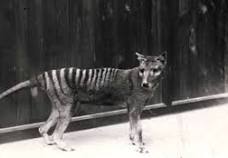According to a study on the Thylacine, 1237 observation and claimed sightings have occurred of the Thylacine since it was declared extinct. There are reliable sightings into the 1980s or even later.

The Study, published in the peer-reviewed journal Science of the Total Environment, the research looked at all the observations and gave them a quality score, from reliable records backed by physical specimen -dead or alive, to sightings by experienced bushmen or fleeting glimpses from less experienced eyes.
If you look at confirmed kills or captures by past hunters or wildlife experts, an extinction date between 1940 and 1970 is more reasonable. However, the study did not throw out sightings from later, merely weighting them heavily, as their veracity is increasingly doubted. When using this method, an extinction date of at least 1980 becomes more likely, with it possibly being as late as the early 2000s.
The study author stated, that while some still hope that the Thylacine still survives somewhere, he put the odds at less than 1%











